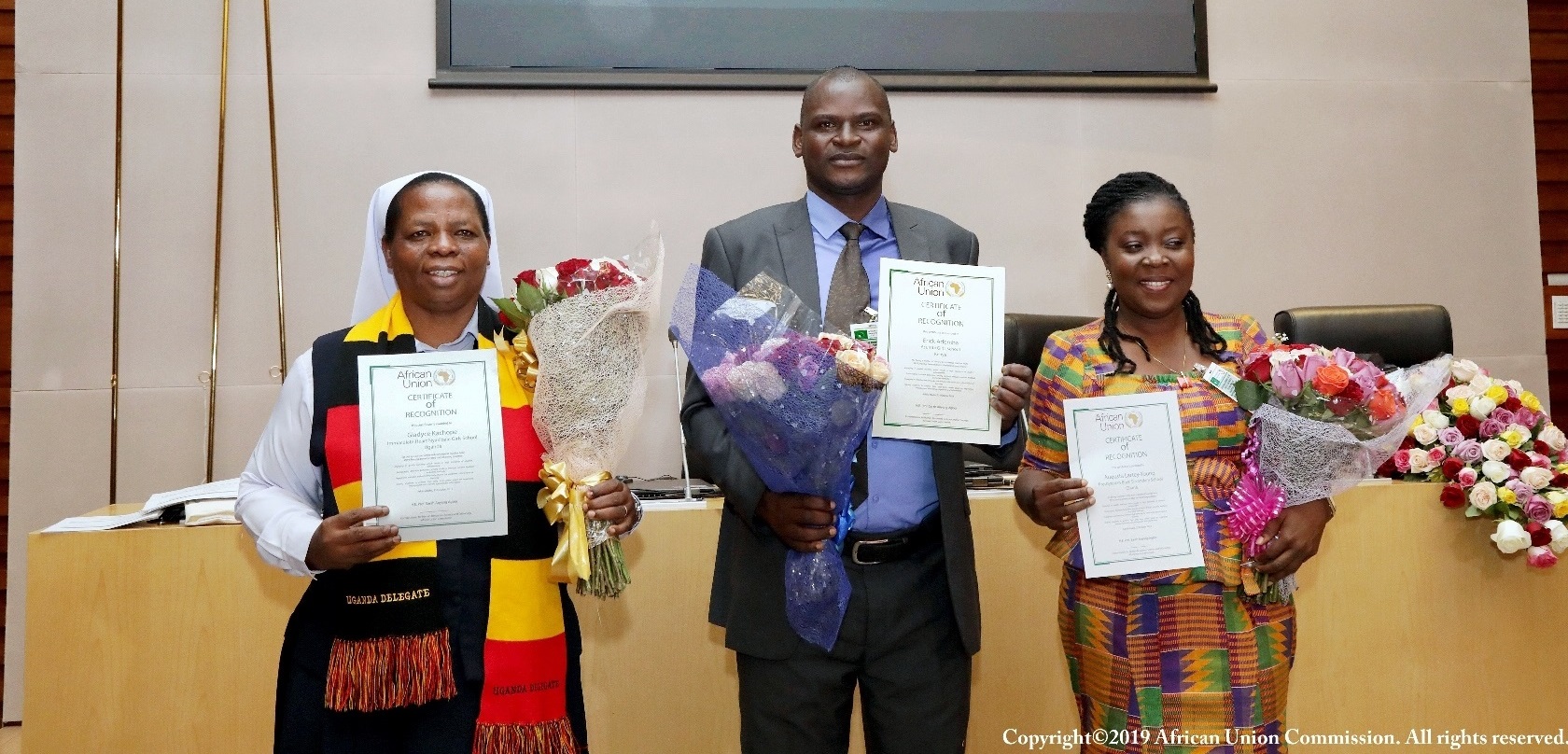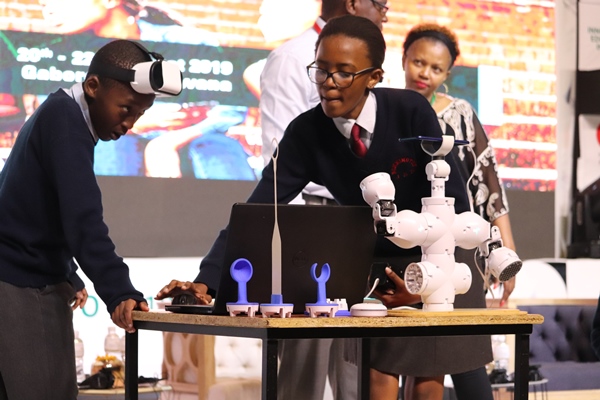The information provided below was submitted as at 2020-05-27 16:39:22 by the Ministry of Education Arts and Culture of Namibia in responding to the AU Survey of Member States on Education Sector Response to COVID-19. The information is solely for experience sharing purposes and not to be used for other purposes without express permission of the African Union Commission.
| Country | Namibia |
| Ministry | Ministry of Education Arts and Culture |
| Education level handled by the Ministry | Pre-School, Primary, Secondary |
| Number of Schools in Pre-School | 340 |
| Number of Schools in Primary | 1379 |
| Number of Schools in Secondary | 201 |
| Does the Ministry have a COVID-19 response plan? | Yes |
| Objectives and Priorities of the COVID-19 response plan | 1. To provide alternative and distance learning modes using blended approach i.e. on-line and off-line as well as printed materials such as booklets and their distribution thereof 2. To identify best practices in the use of eLearning for schools being applied elsewhere in the world as a mitigation against the effect of COVID-19 on learning 3. To plan for re-opening of schools with appropriate strategies to compensate on the lost period of learning |
| Percentage estimate of Schools Closed | 90-100 |
| Percentage estimate of Schools Offering Distance/Virtual Education | 50-69 |
| Percentage estimate of Students who are currently receiving Virtual/Distance Education | 70-89 |
| Methods for the provision of Distance/Virtual Education | Interaction through WhatsApp/Telegram or other social messaging applications between students and teachers, Online lessons via government owned e-learning portal, Online lessons via public-private partnership led e-learning portal, TV, Radio |
| Specific Innovations which are being implemented |
1. Firstly, the Ministry of Education Arts and Culture had conducted a survey to assess the E-learning readiness for all teachers countrywide. The survey had found that 94.7% of teachers have access to mobile phones, 63.6% to television, 60.8% to radio, 41.9% to laptops, while 34.8% of teachers have access to internet. The ministry therefore encouraged teachers to embrace technology and make efforts to reach out to learners by providing on-line and off-line teaching. This saw quite a number of learners being reached by their teachers via platforms such as WhatsApp, Zoom video calls and e-mails in both public and private schools. 2. The Ministry formed a smart partnership with Namibia Media Holding, a local organisation, to produce and distribute booklets with activities for learners from Pre-Primary up to grade 7 for four weeks. Up to 1.6 million booklets were to date for various subjects in English and 8 local languages and were distributed to learners for them complete at home. Parents have the responsibility to collect these booklets from schools on the learners' behalves, of course following WHO guidelines on social distancing, handwashing and wearing of masks. Parents are then expected to return the completed booklets at the end of each week and collect the new booklets. In addition, some of the booklets are printed and distributed through daily local newspapers. |
| Number of Technical and Vocational Education and Training (TVET) Institutions offering Distance-Virtual Education | 67 |
| Partners which are supporting the Ministry of Education to respond to COVID-19 | AfDB, ADEA, EU, FAWE, GIZ, UNESCO, UNICEF, Others, Common Wealth of Learning |
| Is there a plan for reopening schools? | Yes |
| Does the reopening plan include a back to School campaign? | Yes |
| Does the reopening plan include catch-up strategies for the school calendar and or curriculum? | Yes |
| Objectives and priorities of the plan to reopen Schools | - To ensure safety of learners and teachers by following WHO guidelines such as social distancing, mandatory wearing of masks as well as hand washing - To device appropriate strategies to compensate for the lost period of learning |
| Is there a separate strategy/strategies for girls to catch up on their education due to the impact of COVID-19? | Yes |
| Challenges that have been encountered by the Ministry while responding to COVID-19 | - About 32% of schools do not have telecommunication infrastructure. A national strategy for connectivity and availability of resources to roll out e-learning remain a challenge. - According to the teachers’ E-learning readiness survey conducted by the ministry, about 37.8% of the 24 628 teachers who responded indicated that they are ICT illiterate. This indicates the need for capacity building on ICT, including computer literacy among teachers. - Time constraints for renovation and construction of required infrastructure at schools and hostels could delay the return of learners to specific schools or call for alternative modes of teaching such as platoon systems to be followed. , - About 32% of schools do not have telecommunication infrastructure. A national strategy for connectivity and availability of resources to roll out e-learning remain a challenge. - According to the teachers’ E-learning readiness survey conducted by the ministry, about 37.8% of the 24 628 teachers who responded indicated that they are ICT illiterate. This indicates the need for capacity building on ICT, including computer literacy among teachers. - Time constraints for renovation and construction of required infrastructure at schools and hostels could delay the return of learners to specific schools or call for alternative modes of teaching such as platoon systems to be followed. |
| Date Submitted | 27-05-2020 |
If you are interested in contacting the Ministry for further information, please contect This email address is being protected from spambots. You need JavaScript enabled to view it.. Please note that any secondary use of this data is not allowed without seeking express permission of the African Union Commission.

















